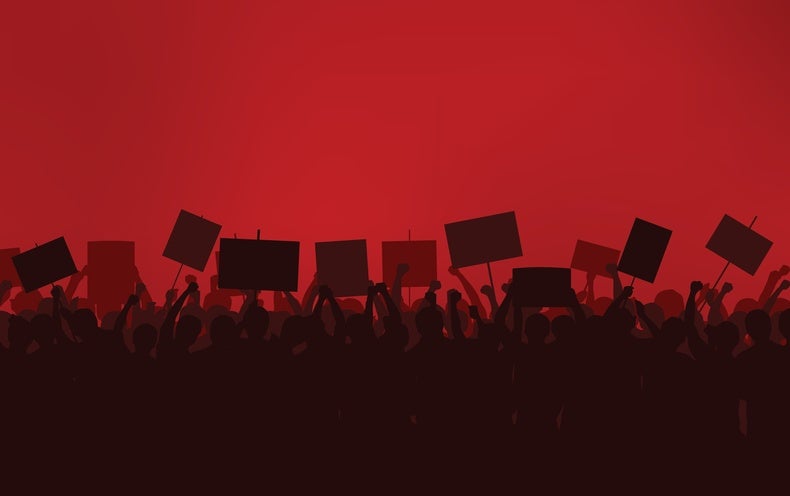The following essay is reprinted with permission from The Conversation, an online publication covering the latest research.
Conspiracy theory beliefs and (more generally) misinformation may be groundless, but they can have a range of harmful real-world consequences, including spreading lies, undermining trust in media and government institutions and inciting violent or even extremist behaviors.
For example, some conspiracy theories claim that the Covid-19 pandemic is a hoax or a plot by a secret cabal to control the world population. Such beliefs can lead to a rejection of vital health measures, such as wearing masks or getting vaccinated, and thereby endanger the public. They can also erode the credibility and authority of scientific and political institutions, such as the World Health Organization or the United Nations, and foster distrust and polarisation.
Taken to the extreme, conspiracy theories can even motivate some individuals or groups to engage in violence. False narratives about the 2020 US presidential election having been “stolen” underpinned the attack on the US Capitol, on 6 January 2021. Another example is the “Pizzagate” incident in 2016: falsely believing that a Washington, D.C., pizzeria was a front for a child-sex ring involving high-ranking Democrats, a man from South Carolina drove to the capital, entered the restaurant with an assault-style rifle, and terrified its workers and customers as he searched for evidence that didn’t exist of a crime that never took place.
Far from harmless chatter, these two examples show misinformation and conspiracy theories can pose serious threats to individual and collective safety, social cohesion and even democratic stability.
Conspiracy-minded communities grow and spread online. Social media, including forums, enable such groups to form and have continuous and repeated access to information that reinforces their beliefs and helps them forge a sense of shared identity. Instead of withering in the face of evidence that contradicts their beliefs, such groups often choose to deepen their commitment and this, in turn, can lead to radicalization. For many, the thought of giving up their delusions is simply unthinkable – they’re too invested.
This identification is why common strategies to combat misinformation or conspiracy theories, such as fact-checking, debunking or presenting alternative views to such theories, not only fail but can even contribute to pushing these communities to grow even more resolute.
Why and how conspiracy theories grow
In our recent study, we set out to understand exactly why and how conspiracy theories persist and persevere over time on social media.
We found that social media can help breed a shared identity toward conspiracy theory radicalization by acting as an echo chamber for such beliefs. The core characteristics of social media play a critical role in building and reinforcing identity echo chambers. For example, they enable individuals to become increasingly committed to such theories through having an easy and persistent access to content that feeds their misconstrued beliefs. Such individuals can imagine themselves to be “real life investigators”, yet scour the Internet searching only for information that confirms their pre-existing beliefs.
Online networks also enable individuals to replicate conspiracy theories easily by simply sharing or copy/pasting related content. This information is therefore quickly visible to followers or members of a forum which can then be visible through hashtags and via algorithms that are used by some platforms. Our study identifies four key stages in the escalation of such conspiracy beliefs.
- Identity confirmation: Users consult and view different types of content (via fora, mainstream media and social media) to actively verify and confirm their own views.
- Identity affirmation: Individuals disassociate or pick selectively information from their original sources of information (mentioned above). In the case of “Pizzagate,” conspiracy-minded users took pictures from the Clinton Foundation’s support work in Haiti, created visual materials supporting supposed connections to a sex-trafficking ring, and then posted them on Reddit and 4chan. While obviously altered and taken out of context, the images were widely shared to promote the conspiracy theory.
- Identity protection: Individuals safeguard their “informational environment” by actively seeking to discredit individuals or organizations that present contradictory evidence, for example with antagonistic or negative posts or comments.
- Identity enactment: Individuals seek broader social approval from a more mainstream audience. This can also lead to efforts to recruit more people and call for violent actions, leveraging the community userbase.
These stages actually constitute a spiraling loop, reinforcing a conspiratorial shared social identity and enabling a potential escalation to radicalization.
Prevention, not more information
Our findings underline the need to rethink some of the current fact-based approaches, which have not only been proven to be ineffective, but that actually feed conspiratorial beliefs. Instead, we encourage policymakers to focus on prevention and support education.
More than ever, developing media literacy and critical-thinking skills that can help citizens assess the credibility and validity of online information sources has become a critical challenge. Those skills include analysis, synthesis, contrasting evidence and options to spot flaws and inconsistencies, among others.
It is also important to address the underlying social issues that can contribute to the spread of conspiracy theories. The reality of conspiracy-theory communities is that they often represent marginalized populations of our society – their very existence is made possible by social exclusion. Addressing social exclusion and promoting community values may also help combat the spread of conspiracy theories.
This article was originally published on The Conversation. Read the original article.
































